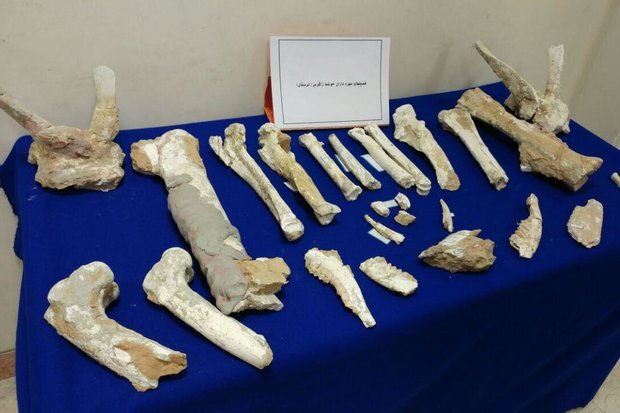Lorestan fossils date seven million years, official says

TEHRAN – Animal fossils, previously discovered in Lorestan province, have been estimated to date some seven million years, the provincial tourism official has said.
“The fossils discovered in the province [of Lorestan] date from seven million years old ago and they belong to the Paleolithic period,” ISNA quoted Ata Hassanpur as saying on Thursday.
The dating of those fossils has been accurately conducted through chemical tests, the official said.
These fossils include several species such as three-toed horses and several species of gazelles that are unique in their kind, Hassanpur said.
Similar fossils have previously been discovered in the Maragheh region before the 1979 Islamic Revolution, but it was not through [an archaeological] exploration, he explained.
Renowned worldwide as a “fossil paradise” in northwest Iran, Maragheh is home to enormous herbivorous fossils such as ones related to Mastodons and Deinotherium (kinds of elephants and rhinos), among other extinct mammals.
The difference of the sample discovered in Lorestan is that it was done through scientific exploration and stratification, he said.
According to the available data, the first well-documented evidence of human habitation on the Iranian Plateau was found in several excavated cave and rock shelters, located mainly in the Zagros Mountains of western Iran, dating to the Middle Palaeolithic or Mousterian period (c. 100,000 BC).
From the Caspian in the northwest to Baluchestan in the southeast, the Iranian plateau extends for close to 2,000 km. The land encompasses the greater part of Iran, Afghanistan, and Pakistan west of the Indus River, containing some 3,700,000 square kilometers. Despite being called a “plateau”, it is far from flat but contains several mountain ranges, the highest peak being Damavand in the Alborz mountain range at 5610 m, and the Dasht-e Loot east of Kerman in Central Iran, falling below 300 m.
Experts say that by 7,000 BC, sowing and harvesting reached Mesopotamia, and there, in the super fertile soil just north of the Persian Gulf, Sumerian ingenuity systematized it and scaled it up. By 6000 BC, farming was entrenched on the banks of the Nile River. About this time, agriculture was developed independently in the Far East, probably in China, with rice rather than wheat as the primary crop.
Because of agriculture, cities, as well as trade relations between different regions and groups of people, developed, further enabling the advancement of human societies and cultures. Agriculture has been an important aspect of economics throughout the centuries before and after the Industrial Revolution. Sustainable development of world food supplies impacts the long-term survival of the species, so care must be taken to ensure that agricultural methods remain in harmony with the environment.
AM
